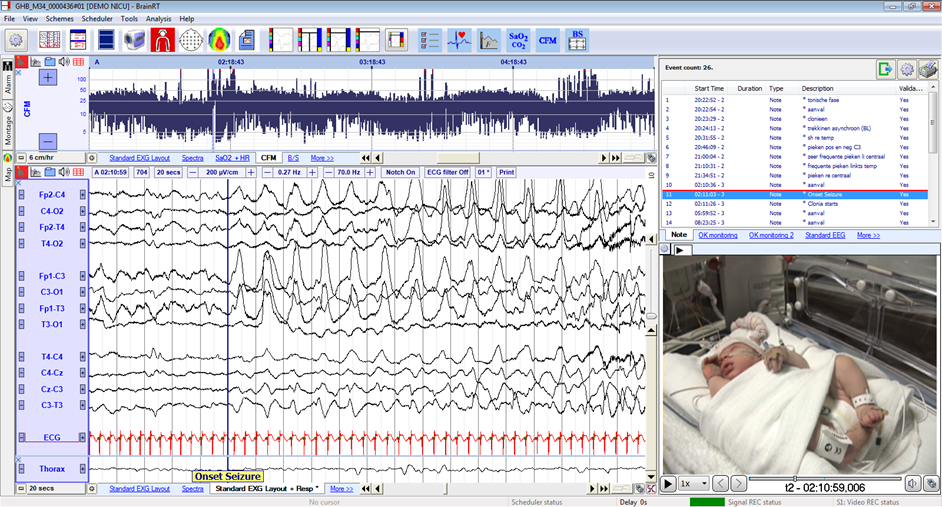Neurologic processing
NICU monitoring

Many neonates require specialized care during their first months of life. During this time, they are often connected to monitors to follow vital signals such as oxygen saturation, blood pressure, body temperature and respiration.
As many patients are monitored for days, weeks or even months, it is important to get a good interpretation of all these data. With the BrainRT™ software, it is possible to record signals from the patient monitor (Philips IntelliVue) and use the real time automatic analyses and review options of the BrainRT™ software for further interpretation.
For neonatal patients who require brain monitoring, the BrainRT™ equipment can be used as a CFM monitor. The raw EEG signals are recorded and can be reviewed in synchrony with the patient monitor data. Video recording can be added as well for optimal review options of the patient status.
The Cerebral Function Monitor
The Cerebral Function Monitor (CFM) is often used as a visual interpretation of the EEG signals. The CFM trend is easy to interpret by non-neurologists and is particularly useful to detect seizures in neonatal patients. The BrainRT™ software calculates the Real Time CFM trend for one or more EEG derivations and includes the original EEG signals for verification.
The CFM trends have been validated to give the same output as commercial CFM monitors (Olympus).
Cardio-respiratory monitoring
For preterm infants, cardio-respiratory parameters are a very important indicator of patient state. The occurrence of many cardio-respiratory events is an indicator that the neonatal patient requires further monitoring, possibly with a home monitoring device.
BrainRT™ automatically detects respiratory disturbances such as apneas and hypopneas, as well as bradycardiac events and desaturations.
To facilitate an easy interpretation of cardio-respiratory measurements in BrainRT, the results from the automatic cardio-respiratory analyses can be summarized into an automatic overview table of all cardio-respiratory related events.